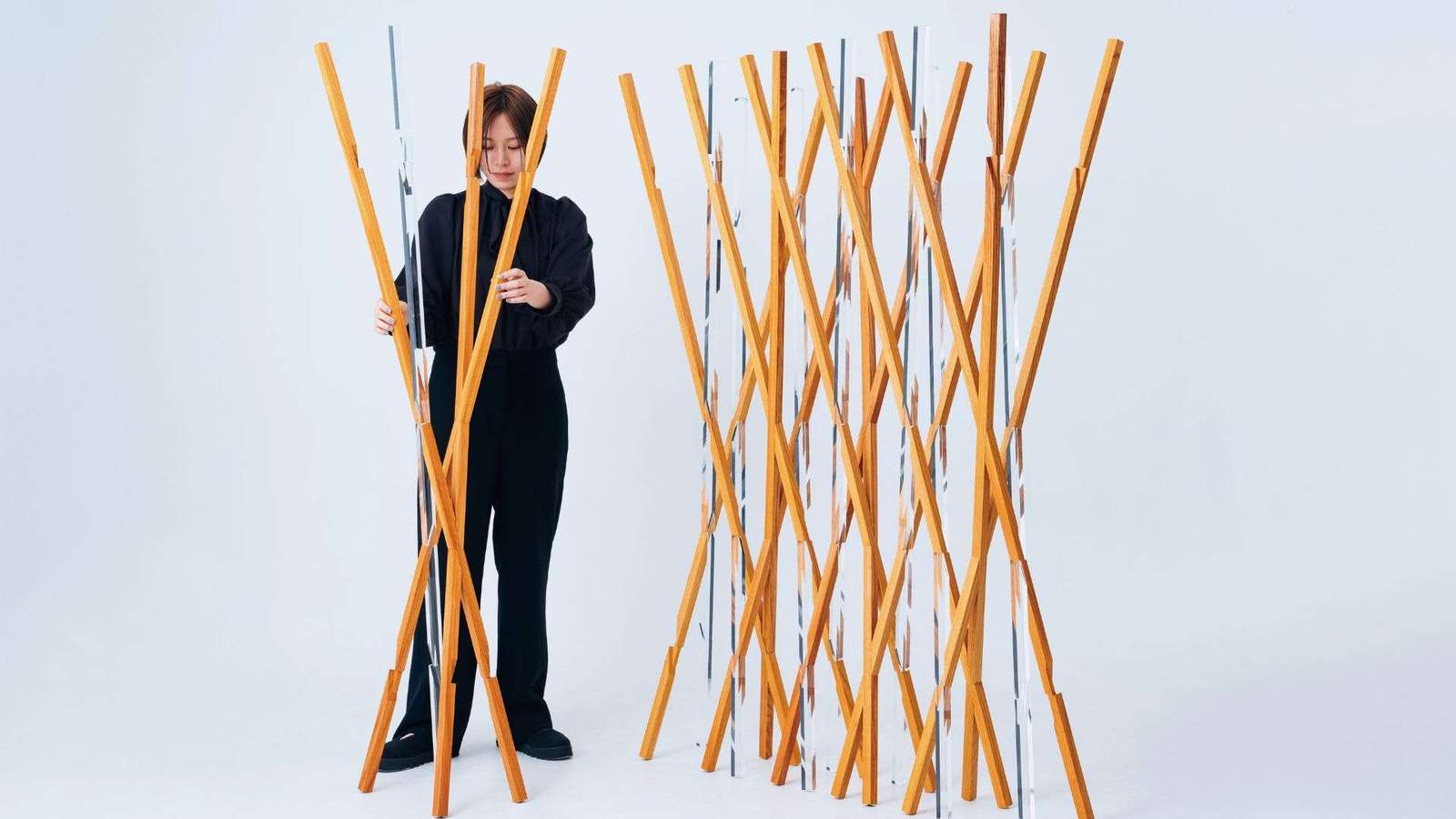Solar-powered products accelerating the transition to solar energy
Embedding solar technology into our everyday lives, there’s been a rise in solar-powered design projects. From coffee-making tools to headphones and the first production-ready solar car.
A ball of gas and plasma 1.4 million kilometers wide and burning at 15 million degrees Celsius at its core. The sun is an unlimited source of energy, the key to fighting our climate crisis, and truly phenomenal.
We’ve been utilizing its power for years – in ancient China. For instance, Yangsui burning mirrors start cooking fires 3,000 years ago.
Additionally, in 1839 French physicist Edmond Becquerel observed the photovoltaic effect which is the production of electricity from light and Bell Labs researchers in the United States went on to produce the first practical silicon solar cell in 1954.
Photovoltaics have come a long way since Bell Labs’ invention – solar power captured using photovoltaic panels or solar electricity cells is becoming a more widespread way to power electronic devices.
An important step towards living more sustainably. As photovoltaic panels become smaller, lighter, and more efficient they are a renewable source of energy.
Below are solar-powered products that brilliantly demonstrate the potential of this green energy and showcase the design possibilities offered by the sun!
1. Sunne by Marjan van Aubel for Sunne
Exclusively powered by solar energy, Dutch lighting brand Sunne collaborates with Dutch designer Marjan van Aubel to create a sunlight-mimicking lamp – Sunne.
Informed by the appearance of a horizon – it’s an 85-centimeter-long landscape-oriented panel that’s designed to be suspended in the air, in front of a window via two wires attached to either end of its top edge.
This illuminating light contains photovoltaic cells enabling it to collect solar energy during the day and light up at night.
“It comprises an integrated battery that stores the collected solar power and thus doesn’t require an external power source!” says Aubel.
Additionally, controlled via a smartphone app, Sunne has three settings – Sunne Rise, Sunne Light, and Sunne Set.
2. Ra by Marjan van Aubel
Bringing solar panels from our roofs into our homes – strips of colorful photovoltaic cells are beautifully arranged into a geometric pattern to form this eclectic artwork conceived by Dutch designer Marjan van Aubel.
Named Ra after the ancient Egyptian sun god – this see-through solar tapestry is less than one millimeter thick and was crafted to be hung in a window so that it can cast vivid shadows on the surrounding walls as the light changes during the day.

When the sun goes down – a ring of electroluminescent paper embedded in the window hanging starts to glow, powered by the energy that was captured by the photovoltaic cells throughout the day.
Unlike a traditional solar lamp, Ra’s purpose is not strictly to provide illumination. It instead shows how the latest generation of clear, pliable PVs can have artistic and decorative applications rather than just functional ones.
“I think it is nice to show that solar energy can become a form of art. It becomes something desirable, something that we would like to be surrounded by instead of hiding!” says Aubel.
3. Coffee-making Tools by Boudewijn Buitenhek
In an experiment that saw him live in an apartment without mains gas or electricity for a week. Dutch designer Boudewijn Buitenhek built his solar-powered kettle and coffee-bean roaster.
Restricting himself to utilizing only energy he could generate from sources within his home – “on the first day of the experiment, I realized I wasn’t even able to make something as mundane and seemingly simple as my usual hot cup of coffee in the morning!” says Buitenhek.
This led him to explore the use of evacuated tubes – a solar heating method discovered in the 18th century by Swiss scientist Horace-Bénédict de Saussure.

Skillfully embodying a two-layer system of glass tubes – the transparent outer tube allows sunlight inside with minimal reflection, while the inner tube is coated in a solar film that converts sunlight into heat, warming water contained within.
Heat loss is reduced thanks to a vacuum between the tubes so that – water can be effectively heated above 200 degrees Celsius.
“This method of capturing solar energy not only enabled me to boil water for my coffee.
After more experimentation – I determined that these tubes could further be utilized to roast raw coffee beans, another energy-intensive process.
The combination of the solar water boiler and solar coffee bean roaster enables me to make a fresh cup of coffee on a sunny day!” he says.
4. Solar Blanket by Mireille Steinhage
To bring renewable energy to those who need it – Central Saint Martins design graduate Mireille Steinhage invents a solar-powered blanket fabricated from conductive yarn.
This Solar Blanket is a solar-powered heated blanket that can be wrapped around a person or draped over a sofa to direct heat toward those sitting on it.
“If we want to realize a more sustainable future – being sustainable should be accessible to everyone.
Solar Blanket is different from a standard electric blanket as it uses solar power to heat up. This makes it more affordable and sustainable, as you only have to spend money on it once!” says Steinhage.

It’s from polyester fabric and striped with conductive yarn to generate heat. The yarn is further covered by polyester ribbon to prevent it from coming into contact with itself when folded.
Steinhage chose these materials for their – functionality, durability as well as cost-effectiveness. And because they are all easy to separate for recycling.
Additionally, the Solar Blanket comes with a solar panel that is designed to be placed in a window to charge a portable battery.
Once charged, the battery can be plugged into the blanket or other products to power them.
5. Sun-Powered Textiles by Aalto University Researchers
Design and physics researchers at Finland’s Aalto University together create clothing with seamlessly concealed solar panels. Making the technology invisible to the naked eye.
The goal of this Sun-Powered Textiles project was to craft an energy-autonomous product capable of powering wearable devices. Such as sensors that measure humidity or temperature – without disrupting the look of a garment.

“A traditional way of integrating photovoltaics with textiles is to attach solar cells on the front surface of a textile to ensure maximum energy harvesting.
This significantly compromises the aesthetics. A black solar cell attached on top of fabric dominates the look of the textile or garment!” says the Aalto University team.
Instead – the multidisciplinary team hid the solar cell underneath the textile of this prototype jacket and optimized the fabric so that enough light could pass through to power the wearable.
Additionally, It also made the Sun-Powered Textiles machine washable. The team further sees this innovation to safety and protection wear, workwear, or sportswear. Where it would eliminate the need for battery charging or replacement for any wearable devices.
6. RPT-02 SOL by Adidas
Designed for exercise enthusiasts – both sunshine and artificial light energy can charge the RPT-02 SOL wireless headphones by sportswear brand Adidas and speaker brand Zound Industries.
“Built in part from recycled plastics and powered by light, the Adidas RPT-02 SOL are self-charging sport headphones created to endure the everyday challenges of an active lifestyle,” says Adidas.

These headphones feature a headband that incorporates a solar cell fabric Powerfoyle that transforms sunlight and indoor light into electricity.
Made by Swedish solar technology manufacturer Exeter. Powerfoyle is comprised of a stack of 100-atom-thick photovoltaic sheets that have been printed onto a plastic sheet.
Although natural sunlight provides the best level of power for the headphones. Household lamps and lights also power the photovoltaic material.
Unlike lots of other photovoltaic materials on the market, which only harvest energy from direct sunlight. Powerfoyle is further able to garner energy on cloudy days from invisible UV rays that pass through clouds.
Additionally, Adidas claims that the headphones can play music for up to 80 hours on a full charge.
7. Lightyear 0 by Lightyear
The world’s first production-ready solar-powered car. Dutch startup Lightyear unveils its Lightyear 0 electric car that has solar panels covering its roof, bonnet, and boot.
This car is powered by traditional electric charging and solar power, where people would be able to drive while it simultaneously charges from sunlight.
A user interface on the car’s touchscreen dashboard gives one cloud-based updates as they drive. From charging status to how much solar energy is being absorbed and which panels are soaking in the sun’s rays at any given moment.
In total five square meters of curved solar panels were into the Lightyear 0 car’s roof, bonnet, and tailgate. Which will convert renewable solar energy into electric power for driving.
Tests undertaken by Lightyear estimate that the solar cells can add up to 70 kilometers (44 miles) per day to the car’s 388-mile range from traditional charging.
“Through Lightyear 0 – we are offering a new future for motorists who want the freedom of mobility with the peace of mind of sustainable energy and that future starts now!” says Lightyear.






